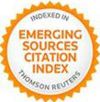Abstract
Vernacular architecture is termed an 'anonymous', ' spontaneous', ' rural'’, and indigenous form of architecture and which is influenced by culture, geography, climate, and ethnic factors. However, defining 'vernacular' is always a difficult task as definitions have variations with respect to context and time. Although research has been conducted globally on vernacular architectural styles and their characteristics, defining a specific vernacular style remains challenging. This research attempts to define vernacular architecture using its characteristics through a comprehensive literature review, followed by an expert survey. The research also aims to delineate vernacular courtyard house typologies by identifying their distinguishing features. The survey was conducted among experts in the field of architecture and is used to define the characteristics of vernacular architecture, and validated the established vernacular courtyard residence categories in Kerala.
Keywords
Full Text:
PDFDOI: http://dx.doi.org/10.2423/i22394303v14n1p97
References
Abdurahiman, S., Kasthurba, A. K., & Nuzhat, A. (2022). Impact of Urban Heritage on Social Values in Historic Urban Precincts-Public Perception of the Kuttichira community,Kerala. SCIRES-IT - SCIentific RESearch and Information Technology., 12(1), 19–30. doi:10.2423/i22394303v12n1p19
Agyekum, K., Kissi, E., & Danku, J. C. (2020). Professionals’ views of vernacular building materials and techniques for green building delivery in Ghana. Scientific African, 8. doi:10.1016/j.sciaf.2020.e00424
AL-Mohannadi, A., Furlan, R., & Major, M. D. (2020). A cultural heritage framework for preserving Qatari vernacular domestic architecture. Sustainability (Switzerland), 12(18). doi:10.3390/SU12187295
Art and heritage commission, & Department of town and country planning. (2019). Fort Area Heritage Zone.
Bhattacherjee, A. (2012). Social Science Research: Principles, Methods, and Practices.
Creangǎ, E., Ciotoiu, I., Gheorghiu, D., & Nash, G. (2010a). Vernacular architecture as a model for contemporary design. WIT Transactions on Ecology and the Environment, 128, 157–171. doi:10.2495/ARC100141
Creangǎ, E., Ciotoiu, I., Gheorghiu, D., & Nash, G. (2010b). Vernacular architecture as a model for contemporary design. WIT Transactions on Ecology and the Environment, 128, 157–171. doi:10.2495/ARC100141
Desai, M. (2018). Wooden architecture of Kerala. Mapin Publishing Pvt Ltd.
Donovan, K., & Gkartzios, M. (2014). Architecture and rural planning: ‘Claiming the vernacular’. Land Use Policy, 41, 334–343. doi:10.1016/j.landusepol.2014.06.013
Dulcie, S., & Maran, E. (2018). Sustainable Quotient of Traditional Houses - a Panoramic View. International Journal Of Engineering Sciences & Research Technology, 7(3), 108–121.
Elangovan, N., & Sundaravel, E. (2021). Method of preparing a document for survey instrument validation by experts. MethodsX, 8. doi:10.1016/j.mex.2021.101326
Ennals, P., & Holdsworth, D. (1981). Vernacular Architecture and the Cultural Landscape of the Maritime Provinces - A Reconnaisance, 10(2), 86–106. Retrieved from https://www.jstor.org/stable/30303377
European Landscape Convention. (2000). Florence.
Fathima, L. (2018). An Introduction to Traditional Muslim Mansions of Malabar Coast. In Proceedings of Metagreen dimensions-international conference on performance of built environment.
Fernandes, J., Mateus, R., Bragança, L., & Correia Da Silva, J. J. (2015). Portuguese vernacular architecture: The contribution of vernacular materials and design approaches for sustainable construction. Architectural Science Review, 58(4), 324–336. doi:10.1080/00038628.2014.974019
ICOMOS. (2002). Vernacular Architecture.
Jahanara, A., Eshkalak, N. J., Shahidipour, S., Karimizadeh, A., Candidate, P., & Scstudent, M. (2014). Vernacular Architecture as a Strategy Toward Sustainable Building Design. IJERT, 3(6). DOI : 10.17577/IJERTV3IS061360
Jayan, N. (2018). Learning from the Past: Study on Sustainable Features from Vernacular Architecture in Coastal Karnataka, 5(12), 1091–1113.
Koduveliparambil, J. J. (1997). Construction Practices in Traditional Dwellings of Kerala,India. McGill University, Montreal.
Kovács, K. (2020). Beyond vernacular architecture. In International Archives of the Photogrammetry, Remote Sensing and Spatial Information Sciences - ISPRS Archives (Vol. 54, pp. 767–772). International Society for Photogrammetry and Remote Sensing. doi:10.5194/isprs-archives-XLIV-M-1-2020-767-2020
Nguyen, A. T., Truong, N. S. H., Rockwood, D., & Tran Le, A. D. (2019). Studies on sustainable features of vernacular architecture in different regions across the world: A comprehensive synthesis and evaluation. Frontiers of Architectural Research, 8(4), 535–548. doi:10.1016/j.foar.2019.07.006
Nihal Arda Akyildiz, & Tuba Nur Olgun. (2020). In the Context of Cultural Heritage An Investigation for Conservation and Sustainability of Traditional Architecture. International Journal of Scientific Research and Innovative Technology, (April 2020).
Oliver, P. (2007). Dwellings: The Vernacular House World Wide. Phaidon press.
Pardo, J. M. F. (2023). Challenges and Current Research Trends for Vernacular Architecture in a Global World: A Literature Review. Buildings, 13(1). doi:10.3390/buildings13010162
Parracha, J. L., Lima, J., Freire, M. T., Ferreira, M., & Faria, P. (2021). Vernacular Earthen Buildings from Leiria, Portugal–Material Characterization. International Journal of Architectural Heritage, 15(9), 1285–1300. doi:10.1080/15583058.2019.1668986
Paul Oliver. (2006). Built to Meet Needs Cultural Issues in Vernacular Architecture. Elsevier.
Rajković, I., & Bojović, M. (2016). Revitalization of Traditional Architecture Towards Sustainable Development of the Skadar Lake Area. Architecture and Urban Planning, 11(1), 32–42. doi:10.1515/aup-2016-0005
Rudofsky, A., Doubleday, by, & City, G. (1964). Architecture without architects, an introduction to nonpedigreed architecture. The Museum of Modern Art: Distributed. Retrieved from www.moma.org/calendar/exhibitions/3459
Rudofsky, B. (1964). Architecture without Architects by Bernard Rudofsky. The Museum of Modern Art: Distributed by Doubleday, Garden City, N.Y.
Sáez, E., & Canziani, J. (2020). Vernacular architecture and cultural landscapes in the sondondo valley (Peru). In International Archives of the Photogrammetry, Remote Sensing and Spatial Information Sciences - ISPRS Archives (Vol. 54, pp. 175–180). International Society for Photogrammetry and Remote Sensing. doi:10.5194/isprs-archives-XLIV-M-1-2020-175-2020
Salih, A. B. M. (2019). The Characters of the Form in the Vernacular Architecture A comparative study of the form’s characters of facades of individual houses and commercial buildings in the City of Baghdad after 2003–Zayoona district as a case study. Journal of Engineering, 25(7), 145–164. doi:10.31026/j.eng.2019.07.09
Salman, M. (2018). Sustainability and Vernacular Architecture: Rethinking What Identity Is. In Urban and Architectural Heritage Conservationwithin Sustainability; UK: Intech Open. Retrieved from www.intechopen.com
Sayigh, A. (2019). Sustainable Vernacular Architecture. How the Past Can Enrich the Future. Springer.
Schildt, H. (2012). The Traditional Kerala Manor:Architecture of south Indian Cathusala house. Institut Francais De Pondicherry.
Thampuran, A. (2001). Traditional Architectural Forms of Malabar Coast. Calicut: Vastuvidyaprathisthanam.
UNESCO. (2003). 2003 Convention for the Safeguarding of the Intangible Cultural Heritage. Retrieved from www.unesco.org/culture/ich/
Vural, N., Vural, S., Engin, N., & Reşat Sümerkan, M. (2007). Eastern Black Sea Region-A sample of modular design in the vernacular architecture. Building and Environment, 42(7), 2746–2761. doi:10.1016/j.buildenv.2006.07.017
Widiastuti, I. (2018). Typology Study of Vernacular Courtyard-House in Kerala, South India. Jurnal Sosioteknologi, 17(3), 365–372. doi:10.5614/sostek.itbj.2018.17.3.4
Zhai, Z. (John), & Previtali, J. M. (2010). Ancient vernacular architecture: characteristics categorization and energy performance evaluation. Energy and Buildings, 42(3), 357–365. doi:10.1016/j.enbuild.2009.10.002
Article Metrics
Metrics powered by PLOS ALM
Refbacks
- There are currently no refbacks.
Copyright (c) 2024 Linas Fathima A., Chithra K.

This work is licensed under a Creative Commons Attribution-NonCommercial-NoDerivatives 4.0 International License.
SCIRES-IT, e-ISSN 2239-4303
Journal founded by Virginia Valzano






